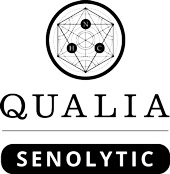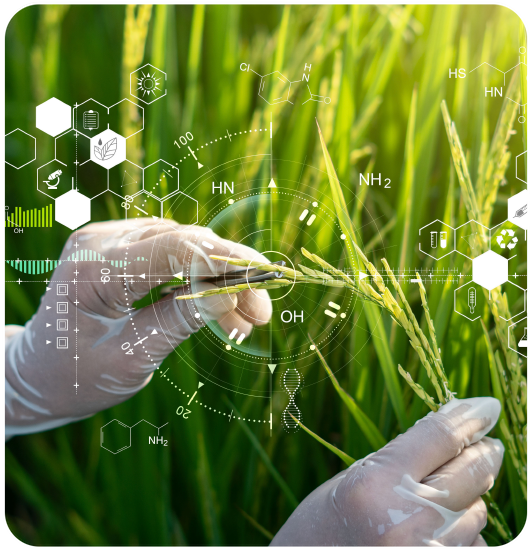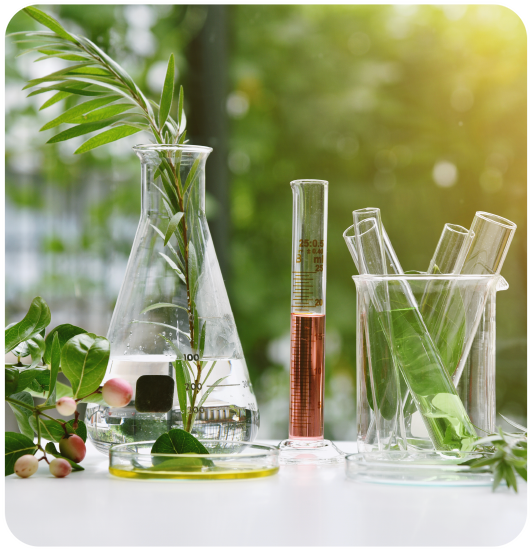

Get More
Youthful
Energy
& Boost Your
Cellular Health

Over 30? Age On Your Terms.
• Helps naturally eliminate senescent cells.
• Only needs to be taken 2 days a month.
• Turn back the clock on your aging symptoms.
• Helps Counter Age-Related Joint Challenges*
WHY Qualia
Understanding
How We Age

Senolytic Ingredients
Help ELIMINATE Senescent Cells
Senolytic ingredients are the biggest discovery in aging
science of the last decade, but very few people have started
taking advantage of this medical breakthrough.
Qualia Senolytic’s Age-Defying Ingredients:
Qualia’s science team has been researching the emerging science of senolytic ingredients since their discovery in 2015. The artful blend of nine of the most researched-back senolytics in precise and complimentary dosages, led to the promising results of Qualia Senolytic’s double-blind, placebo controlled clinical trial. These nine ingredients are at the absolute frontier of nutritionally optimizing human aging:


Quercetin is a yellow plant pigment shown to support pruning of stressed cells and healthy changes to their behavior. But quercetin is poorly absorbed by the human body. Quercefit® is a unique and patented Phytosome® formulation of quercetin created to overcome this bioavailability obstacle. By creating a quercetin phytosome complex using sunflower lecithin, the bioavailability is dramatically enhanced.


Fisetin is a flavonol found in certain fruits and vegetables, such as strawberries and persimmon. Like quercetin, it was one of the first senolytic ingredients ever discovered, and boasting one of the most impressive bodies of research of all senolytics. Fisetin has been strongly correlated with supporting body tissues by helping with pruning of stressed cells.


Luteolin is a yellow plant pigment used for centuries as a yellow dye. In fact, the latin name for yellow is luteus. Luteolin has a very similar molecular structure to quercetin, and much like fisetin, luteolin has also shown evidence of senolytic properties by helping to manage senescent cell elimination.


Curcumin is the pigment in turmeric that results in its yellow-orange coloring. Curcumin appears to have senolytic potential in intervertebral disc cells, but much like quercetin, it has poor bioavailability. LONGVIDA OPTIMIZED CURCUMIN® EXTRACT was developed to overcome this bioavailability hurdle and has been researched in human studies in areas including cognitive function, mood, exercise recovery, and joint health.


Piperlongumine is an alkaloid found in many species of pepper plant, and found in abundance in the Asian long pepper plant (Piper longum), particularly in its root structure from which we source our piperlongumine. It is the only natural compound known to support a novel mechanism that helps manage senescent cells called oxidation resistance 1 or OXR1.


SENACTIV® is a patented blend of notoginseng root and chestnut rose hips. It has been shown to support exercise recovery and management of senescent cells in muscle. This provides an asset within our formula to help counteract the slow workout recoveries that are common with the human aging process.


Oleuropein (a secoiridoid polyphenol) is found in high amounts within olive leaves. Our particular olive leaf extract is standardized for 40% oleuropein. A 2020 study showed that oleuropein supports the management of senescent chondrocytes—chondrocytes are the cells that create cartilage and support healthy joints (an area of our bodies which commonly experience noticeable negative aging symptoms).


The seed-like fruits from milk thistle (Silybum marianum) have been in Mediterranean diets for over 2,000 years. The main active substance in milk thistle is silymarin. Our extract is standardized to 80% silymarin by spectrophotometry, and has potential in playing a complementary role to other ingredients in Qualia Senolytic, particularly the stressed cell support of curcumin.


Soybean seeds, like most legumes, contain a type of bioflavonoid called isoflavonoids. Our soybean seed extract is standardized at 40% isoflavones which shows promise as a having a complementary role in our overall formulation. Daidzein, for example (an isoflavonoid in our extract) is one of the top four compounds identified as a possible candidate for helping manage some types of senescent cells.

Your happiness is guaranteed.
If you do not love Qualia for any reason, simply get in touch via phone or email and let us know you’d like a refund. More on our 100-day guarantee here.
Health And Fitness
Leaders Who Love
Qualia
Qualia products are used and loved by some
of today's brightest minds in business, sport,
and personal wellness.
Reviews
References
1.
Y. Zhu et al., Aging Cell. 14, 644–658 (2015).
2.
A. Riva, M. Ronchi, G. Petrangolini, S. Bosisio, P. Allegrini, Eur. J. Drug Metab. Pharmacokinet. 44, 169–177 (2019).
3.
M. J. Yousefzadeh et al., EBioMedicine. 36, 18–28 (2018).
4.
S. Romashkan, H. Chang, E. C. Hadley, J. Gerontol. A Biol. Sci. Med. Sci. 76, 1144–1152 (2021).
5.
H. M. Awad et al., Chem. Res. Toxicol. 14, 398–408 (2001).
6.
Q. Jiang et al., Curr. Pharm. Biotechnol. 19, 428–437 (2018).
7.
X. Lu, Y. Li, X. Li, H. A. Aisa, Oncol. Lett. 14, 1993–2000 (2017).
8.
S. Verma et al., J. Recept. Signal Transduct. Res. 37, 391–400 (2017).
9.
S. Dirimanov, P. Högger, Biomolecules. 9 (2019), doi:10.3390/biom9060219.
10.
J. Fu et al., PLoS One. 7, e49194 (2012).
11.
A. Kim, J.-M. Yun, J. Med. Food. 20, 782–789 (2017).
12.
M. Hytti et al., J. Nutr. Biochem. 42, 37–42 (2017).
13.
K. Sak, K. Kasemaa, H. Everaus, Food Funct. 7, 3815–3824 (2016).
14.
H. Cherif et al., J. Clin. Med. Res. 8 (2019), doi:10.3390/jcm8040433.
15.
S. Pirmoradi, E. Fathi, R. Farahzadi, Y. Pilehvar-Soltanahmadi, N. Zarghami, Drug Res. . 68, 213–221 (2018).
16.
H. Jin et al., Cell. Signal. 33, 79–85 (2017).
17.
S. Prasad, B. B. Aggarwal, in Herbal Medicine: Biomolecular and Clinical Aspects, I. F. F. Benzie, S. Wachtel-Galor, Eds. (CRC Press/Taylor & Francis, Boca Raton (FL), 2012; https://www.ncbi.nlm.nih.gov/pubmed/22593922).
18.
E. Mutlu Altundağ et al., Nutr. Cancer. 73, 703–712 (2021).
19.
N. S. Srivastava, R. A. K. Srivastava, Phytomedicine. 52, 117–128 (2019).
20.
M. M. Abdel-Diam et al., Environ. Sci. Pollut. Res. Int. 26, 3659–3665 (2019).
21.
S. Kundur et al., J. Cell. Physiol. 234, 11103–11118 (2019).
22.
E. Mutlu Altundağ, A. M. Yılmaz, S. Koçtürk, Y. Taga, A. S. Yalçın, Nutr. Cancer. 70, 97–108 (2018).
23.
G. H. Heeba, M. E. Mahmoud, A. A. El Hanafy, Toxicol. Ind. Health. 30, 551–560 (2014).
24.
A. Montgomery, T. Adeyeni, K. San, R. M. Heuertz, U. R. Ezekiel, J. Cancer. 7, 1250–1257 (2016).
25.
V. Alfonso-Moreno, A. López-Serrano, E. Moreno-Osset, Rev. Esp. Enferm. Dig. 109, 875 (2017).
26.
S. Dalimi-Asl, H. Babaahmadi-Rezaei, G. Mohammadzadeh, Iran. J. Med. Sci. 45, 477–484 (2020).
27.
S. O. Ali, H. A. Darwish, N. A. Ismail, Basic Clin. Pharmacol. Toxicol. 118, 369–380 (2016).
28.
M. Nasiri et al., Asian Pac. J. Cancer Prev. 14, 3449–3453 (2013).
29.
N. Abdel-Magied, A. A. Elkady, Exp. Mol. Pathol. 111, 104299 (2019).
30.
H. Avci et al., Exp. Toxicol. Pathol. 69, 317–327 (2017).
31.
V. S. Gota et al., J. Agric. Food Chem. 58, 2095–2099 (2010).
32.
Y. Wang et al., Aging . 8, 2915–2926 (2016).
33.
X. Zhang et al., Aging Cell. 17, e12780 (2018).
34.
X. Liu et al., Bioorg. Med. Chem. 26, 3925–3938 (2018).
35.
L. O. Afolabi, J. Bi, L. Chen, X. Wan, Int. Immunopharmacol. 96, 107658 (2021).
36.
R. W. Morton, D. A. Traylor, P. J. M. Weijs, S. M. Phillips, Curr. Opin. Crit. Care. 24, 124–130 (2018).
37.
C. M. Dungan et al., Geroscience (2022), doi:10.1007/s11357-022-00542-2.
38.
Y. Saito, T. S. Chikenji, T. Matsumura, M. Nakano, M. Fujimiya, Nat. Commun. 11, 889 (2020).
39.
C. Yang et al., Aging . 10, 1356–1365 (2018).
40.
Y. Saito, T. S. Chikenji, Front. Pharmacol. 12, 739510 (2021).
41.
T. X. Y. Lee et al., Aging . 13, 16567–16576 (2021).
42.
J. Wu et al., J. Ginseng Res. 43, 580–588 (2019).
43.
C.-W. Hou et al., PLoS One. 10, e0116387 (2015).
44.
J. Wu et al., J. Funct. Foods. 58, 27–33 (2019).
45.
J. Wu et al., Aging . 12, 20226–20234 (2020).
46.
C. Petrella et al., Curr. Med. Chem. 28, 7595–7613 (2021).
47.
A. Medina-Remón et al., Br. J. Clin. Pharmacol. 83, 114–128 (2017).
48.
M. Finicelli, T. Squillaro, U. Galderisi, G. Peluso, Nutrients. 13 (2021), doi:10.3390/nu13113831.
49.
A. Mehmood, M. Usman, P. Patil, L. Zhao, C. Wang, Food Sci Nutr. 8, 4639–4655 (2020).
50.
A. Romani et al., Nutrients. 11 (2019), doi:10.3390/nu11081776.
51.
B. Barbaro et al., Int. J. Mol. Sci. 15, 18508–18524 (2014).
52.
B. Klimova, M. Novotný, K. Kuca, M. Valis, Neuropsychiatr. Dis. Treat. 15, 3033–3040 (2019).
53.
M. Varela-Eirín et al., Aging . 12, 15882–15905 (2020).
54.
H. Thoppil, K. Riabowol, Front Cell Dev Biol. 7, 367 (2019).
55.
M. Amaya-Montoya, A. Pérez-Londoño, V. Guatibonza-García, A. Vargas-Villanueva, C. O. Mendivil, Adv. Ther. 37, 1407–1424 (2020).
56.
C. Kang, Mol. Cells. 42, 821–827 (2019).
57.
J. Birch, J. Gil, Genes Dev. 34, 1565–1576 (2020).
58.
L. Zhang, L. E. Pitcher, V. Prahalad, L. J. Niedernhofer, P. D. Robbins, FEBS J. (2022), doi:10.1111/febs.16350.
59.
B. Menicacci, C. Cipriani, F. Margheri, A. Mocali, L. Giovannelli, Int. J. Mol. Sci. 18 (2017), doi:10.3390/ijms18112275.
60.
M. Malavolta et al., Mediators Inflamm. 2018, 4159013 (2018).
61.
A. Al Mamun et al., Eur. J. Pharmacol., 174991 (2022).
62.
L. J. Hickson et al., EBioMedicine. 47, 446–456 (2019).
63.
S. M. Woo, K.-J. Min, I. G. Chae, K.-S. Chun, T. K. Kwon, Mol. Carcinog. 54, 216–228 (2015).
64.
G. Deep, S. C. Gangar, C. Agarwal, R. Agarwal, Cancer Prev. Res. . 4, 1222–1232 (2011).
65.
H. Zhao, G. E. Brandt, L. Galam, R. L. Matts, B. S. J. Blagg, Bioorg. Med. Chem. Lett. 21, 2659–2664 (2011).
66.
E. Cuyàs et al., Food Chem. Toxicol. 132, 110645 (2019).
67.
G. Rizzo, L. Baroni, Nutrients. 10 (2018), doi:10.3390/nu10010043.
68.
D. Kusumoto et al., Nat. Commun. 12, 257 (2021).
69.
M. K. Sundaram et al., Anticancer Agents Med. Chem. 18, 412–421 (2018).
70.
I. A. M. Groh, C. Chen, C. Lüske, A. T. Cartus, M. Esselen, J. Nutr. Metab. 2013, 821082 (2013).
71.
E. P. Feener, J. M. Northrup, L. P. Aiello, G. L. King, J. Clin. Invest. 95, 1353–1362 (1995).
72.
J. Lee, J. Ju, S. Park, S. J. Hong, S. Yoon, Nutr. Cancer. 64, 153–162 (2012).
73.
G. Xie et al., J. Invest. Dermatol. 137, 1731–1739 (2017).











 Clinically Tested Formula*
Clinically Tested Formula*























